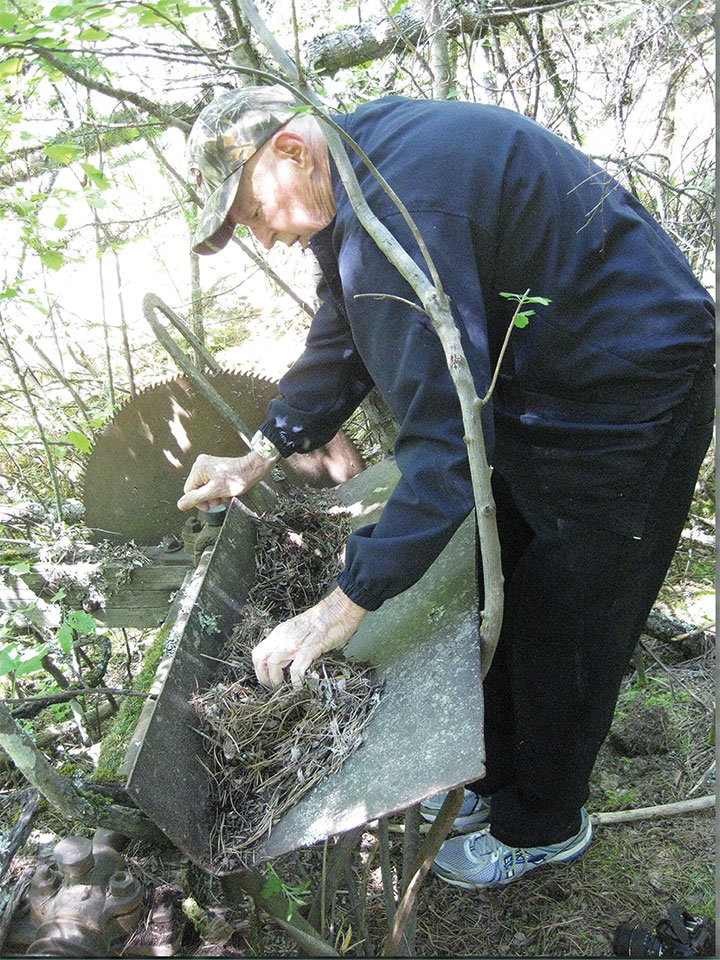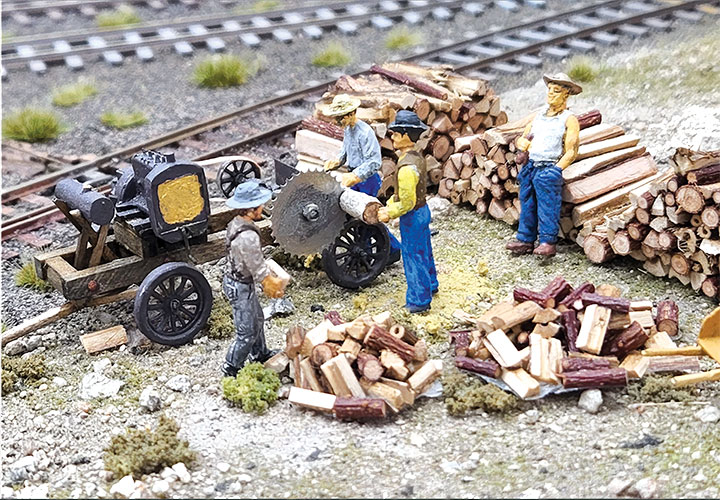Back in the 1930s–40s in my little town in the Missouri Ozarks, nearly everyone heated with wood stoves or fireplaces. Only the very well-to-do could afford coal as a heat source and the rich had stoker fed central coal furnaces.
As timber was plentiful and the area was dotted with small farms, cutting trees was a cash crop. Except for making railroad ties and a stave mill, stove wood was needed to heat by about 98 percent of the homes and businesses.
Farmers and loggers would cut mostly oak for firewood and deliver it to town by the cord. That is a stack of four-foot logs four feet high by eight feet long. The larger logs were split to a manageable size when it was cut to the length needed for heating stoves. Cook stoves burned wood cut and split from “slabs.” This was the side scrap wood left over after a log was run through a sawmill cutting lumber.
These cords of wood were delivered to houses in town by wagon or truck and stacked in the yard so you could see that a full cord was delivered. Even the slab wood, often up to 20 feet long, was delivered.
As a variety of wood stove sizes existed, the four-foot log needed to be cut to a specific size. The old, reliable 2-man crosscut saw was originally used, but by the late 20s, small portable sawmills sprang up to meet this need. They were designed and built by enterprising men all over the country, usually using readily available scrap parts.
A few years ago, I wanted to model one of these portable sawmills for my Sn3 layout and started searching for photos or any information that was available. I contacted the Missouri Conservation Commission, the Missouri Historical Society, and the U.S. Forest Service, but to no avail. I talked to everyone I knew that might have information and came up empty handed.
One of our sons had moved to Idaho several years ago and bought a small acreage off the beaten path between Sandpoint and Cour d’ Alene. Talking to him on the phone one time I told him about my search for information on a portable sawmill. He laughed and told me he had one half buried way back in the woods on his property.
Several months later my wife and I flew out to see him and his family and he loaded me up on the back of his ATV and off we went through the woods. A couple of miles from the house we came upon the remains of the sawmill, complete with trees growing up through the frame and lots of half decayed leaves covering it.

We took many photos of it and measurements of the parts. The motor to power it was missing, as was the drive belt, but everything else was intact and the grease fittings were still filled. This enabled me to draw up rough plans for my sawmill.
Not long after I finished my drawings a friend wrote me that there were two videos of portable sawmills on the internet. I quickly looked them up and found that there were two different versions of the feed mechanism of the sawmills. The common thing was they were all powered by a Model T Ford engine.
The version in the woods that I photographed was built on two heavy timbers and looked like it was a skid built to drag through the woods with cast iron pieces that the workings of the sawmill were attached to. The log being cut was laid down in a bed and the log was hinged up into the sawblade.
The ones that I remembered and viewed in one of the videos was entirely built on a Model T frame that had been turned into a trailer with the motor turned sideways. The log was placed on a slide that utilized the model T frame moving into the blade and a coil spring brought the carriage back so the log could be moved over for another cut or replaced with a new log. The saw blade was three to four feet in diameter without any guards. As the operator pushed the log forward, a second man would grab the offcut and throw it into a pile. I don’t remember any of the men ever wearing goggles to protect their eyes. Our stoves accepted 18-inch-long wood, so each four-foot log was cut into three pieces. Kitchen stoves, like my grandparents had, usually took 12” long wood and when cutting “slabs” they were cut to this length and then a man would use an axe to split them into narrow pieces.
My job was to quickly clean up the pile of sawdust so it would not kill the lawn grass and then pile the cut wood onto my wagon and haul it to the garage and stack it so it would not get wet or covered with snow. Every day after school I would load my wagon with wood and haul it up a small hill to a covered front porch which was as close to our two stoves as possible. After my father built a fire in the mornings, my mother would keep it going during the day.
The videos on the internet even showed one Model T that looked like it had been a pick-up, the bed removed, and the sawblade and feed attached. The drive shaft would be switched from the differential to a mechanism that would power the blade. The owners of these portable sawmills built up a following of customers and people depended on them to come around every fall and during the winter if they ran out of stove wood. The first one of these trailer-sawmills was pulled by a team of horses. Later a Model T was used to pull it.

Most house fires when I was growing up were caused by chimney fires. Today in that little town most of the houses have their furnaces located in a little structure in the yard behind their house and the heat ducted into the house as a safety measure. Although electricity, oil and gas fired furnaces have replaced coal, many people still heat with wood. Our son in Idaho has electric heat in his home, but still cuts his wood with a chain saw and his wife splits the logs to feed their two wood stoves in their house.